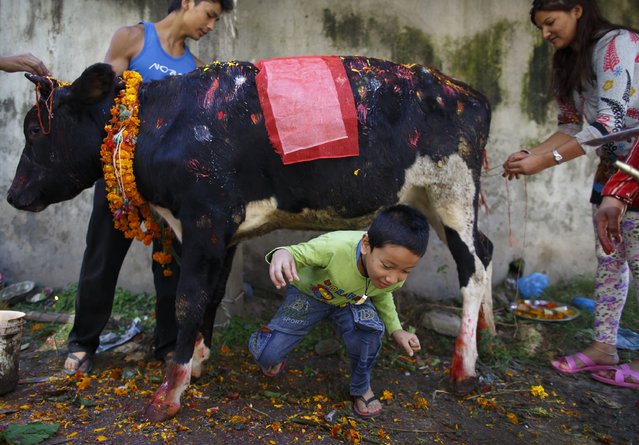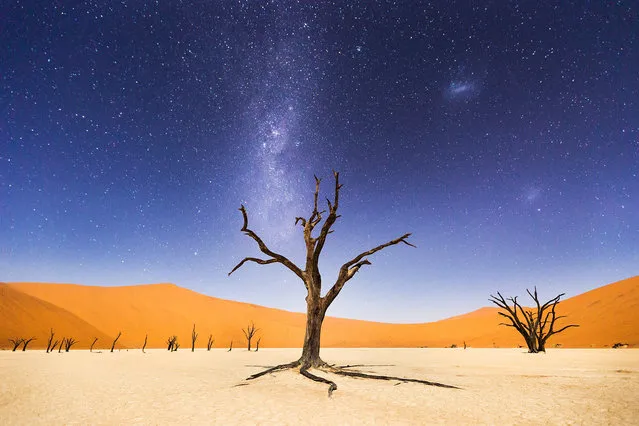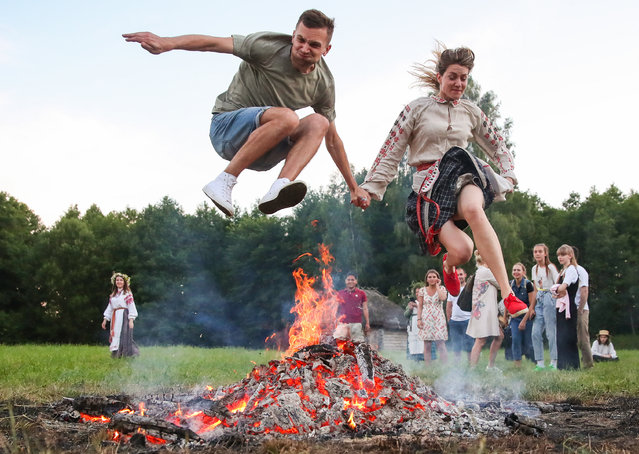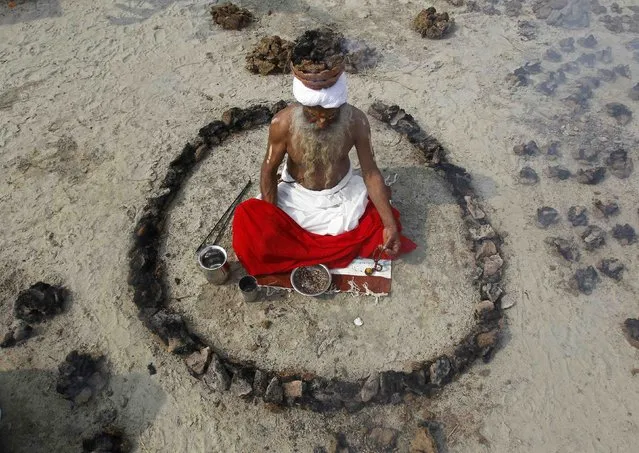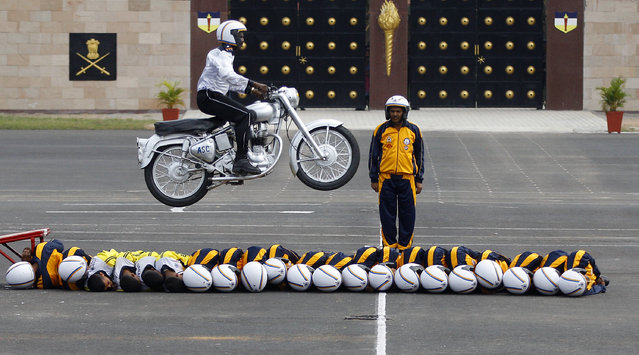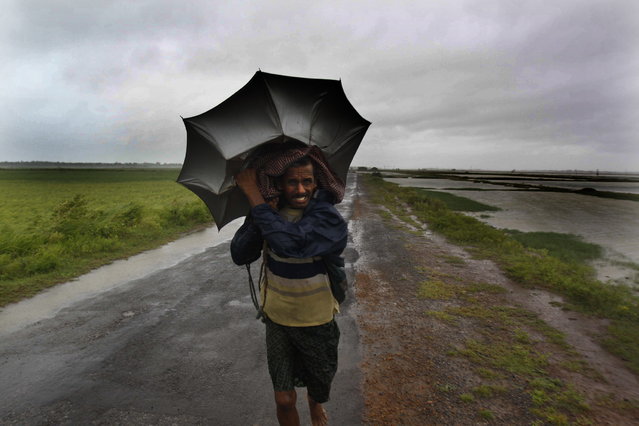
People ride a minibus illuminated with green colorful lights at a street in preparation for celebrations of the birthday of the prophet Muhammad, in Sana'a, Yemen, 04 October 2022. Mawlid is annually celebrated by many Muslim countries on the 12th day of Rabi al-Awwal (the third month of the Islamic calendar), marking the birthday of the prophet Muhammad, which is expected to be marked on 08 October 2022. In Yemen, it is celebrated by illuminating buildings and streets with green colorful lights and decorating vehicles in green. (Photo by Yahya Arhab/EPA/EFE)
19 Oct 2022 04:17:00,post received
0 comments

